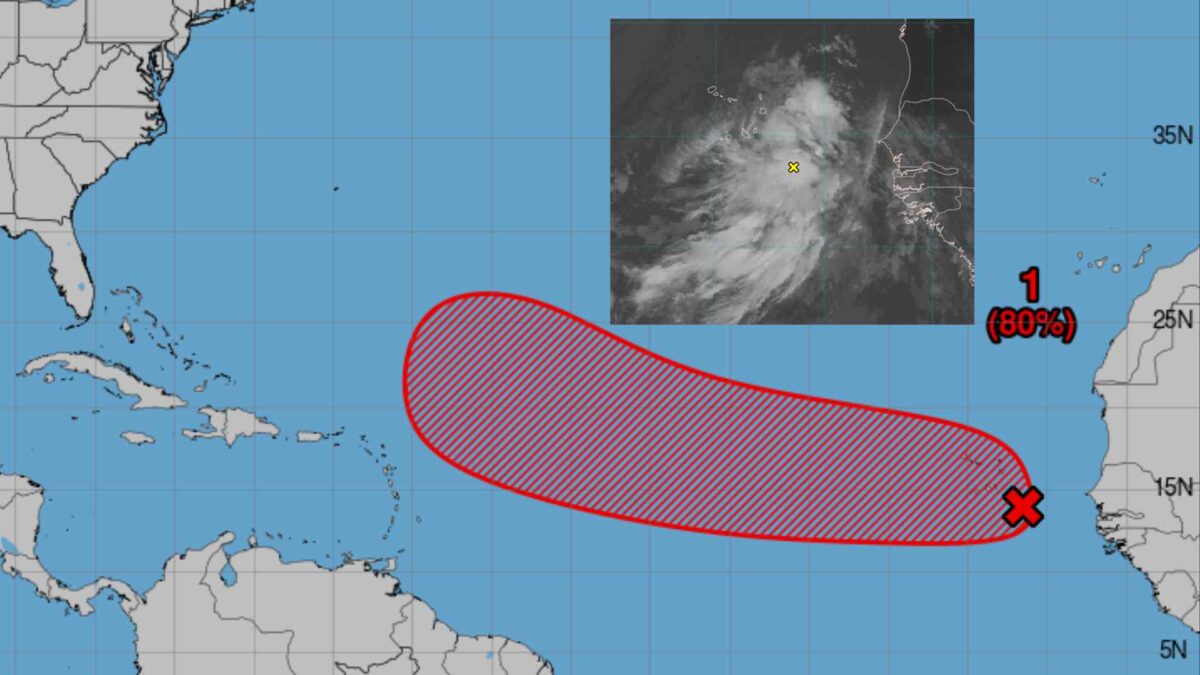
80% Chance of Tropical Depression Forming in Eastern Atlantic

The National Hurricane Center has issued an update on a tropical disturbance in the eastern tropical Atlantic that is showing signs of strengthening.
Showers and thunderstorms have increased around a tropical wave located just southeast of the Cabo Verde Islands.
Environmental conditions are favourable for further development, and a tropical depression is likely to form by mid to late this week. The system is expected to move west-northwestward at 15 to 20 mph across the eastern and central tropical Atlantic.
Locally heavy rainfall and gusty winds are possible today and on Monday across the Cabo Verde Islands, regardless of whether the system develops further.
The National Hurricane Center assigns a 30 percent chance of formation within the next 48 hours, rising to a high 80 percent chance over the next seven days.

The 2025 Atlantic hurricane season is forecasted to be above average, with meteorological agencies predicting increased tropical activity. The National Oceanic and Atmospheric Administration (NOAA) expects between 13 and 18 named storms this season, including 5 to 9 hurricanes and 2 to 5 major hurricanes reaching Category 3 or higher. This outlook reflects a 50% probability of above-normal activity, slightly reduced from an earlier forecast of 60%.
Colorado State University (CSU) maintains a similarly active forecast, projecting 17 named storms, 9 hurricanes, and 4 major hurricanes. Their prediction is based on warmer-than-normal sea surface temperatures and a shift to neutral El Niño–Southern Oscillation conditions.
AccuWeather forecasters also anticipate increased tropical storm formation, especially around mid-August, with three to five named storms expected across the Atlantic basin during that period.
Several factors are driving this elevated risk. Sea surface temperatures are currently 1 to 2 degrees Celsius above average, which, combined with reduced wind shear, creates favorable conditions for storm intensification. Additionally, the absence of El Niño this year further supports the likelihood of an active hurricane season.
Share this WeathÉire story:







